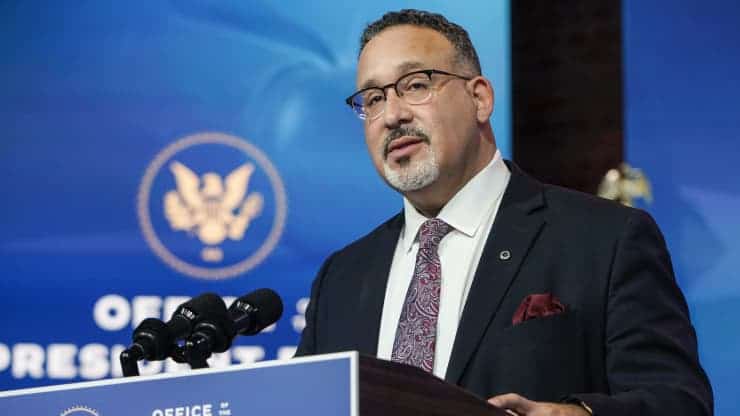
There’s a growing push for students to get personal financial education in high school.
But, according to U.S. Secretary of Education Miguel Cardona, that might not be early enough.
“When I talk to students now, they talk about the need for financial literacy learning in a practical sense — how to look at debt and how to plan for a financially secure future,” Cardona told CNBC’s Sharon Epperson in an interview.
While states and local boards — and not the federal Education Department — control curriculums, the group is still trying to promote financial literacy instruction at an early level, Cardona said.
“We can’t wait for a personal finance course in high school,” he said. “We need to infuse it more naturally so that by the time they get to high school there’s a better understanding of it.”
Currently, a personal finance education course is a high school requirement in 21 states, according to data from Next Gen Personal Finance. In 24 states, high schools must offer personal finance education, but it’s not a requirement for students to take it.
Bridge gaps
At this point in the coronavirus pandemic, schools have an opportunity to rethink how they’re approaching teaching students as they welcome them back to classrooms in person, according to Cardona.
“I can’t think of a better time than now where we are as close to the reset button in education as we’ve ever been,” Cardona said, adding that there is also an opportunity to address gaps in achievement often seen among students of color, many of whom come from families hit hardest by the pandemic.
“I expect that as we reopen schools, we are aggressively addressing whatever instructional loss and time our students have had,” Cardona said. This includes providing adequate support for students and families, as well as rethinking curriculum.
Weaving better personal finance education into classrooms as soon as possible makes a lot of sense as the U.S. continues to grapple with the pandemic, which has impacted money for many.
“When we talk about financial literacy planning, we have to be very intentional about it,” Cardona said. This includes making sure that students can see themselves in the curriculum so that they feel connected to schools.
“If our students are seen and they’re valued, they will achieve,” he said.
It also means providing resources in other languages, especially Spanish, so that parents and students can learn about personal finance. Spanish is the second-most spoken language in the U.S. after English, and more than 40 million people in the country are native speakers.
“Schools who serve students whose families are monolingual Spanish speakers must make resources available to those families in a language that we understand,” he said. “We all benefit from that.”
Going forward
Of course, because the Education Department doesn’t set curriculums across the country, its influence on how individual schools approach personal finance education is somewhat limited.
Still, Cardona is doing what he can to encourage states and districts to include better financial literacy courses and programs for students.
“What we’re doing is elevating best practices,” Cardona said. “What we’re doing is looking for state level policies that do promote financial literacy at an earlier age and lifting those up.”
In addition, Cardona pointed out multiple provisions in both the American Rescue Plan and President Joe Biden’s Build Back Better initiative that will give even more support to schools and teachers across the country.
Ultimately, multiple levels of the government will have to work together to make sure that all students have personal finance education in their high schools, middle schools and even elementary schools.
“I think the time is now, for us to have an approach that is local, state and federal working in unison,” Cardona said.